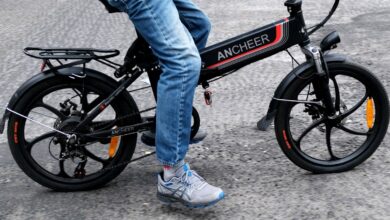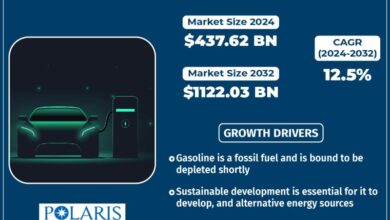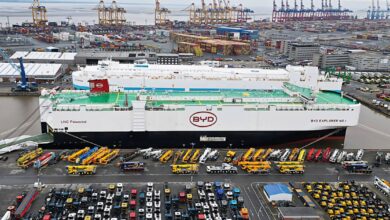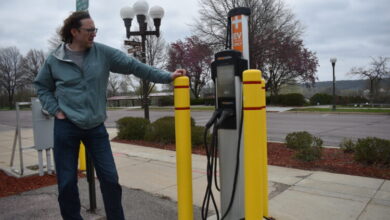A Highway in Indiana Could One Day Charge Your EV While You’re Driving It
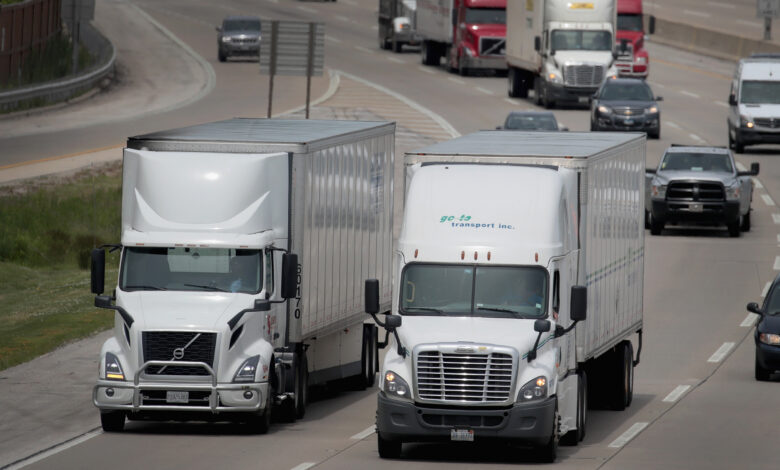
Blake Dollier spoke excitedly as he watched the construction crews pulverize concrete along a quarter-mile stretch of U.S. Highway 52 where it passes through West Lafayette, Indiana.
Soon, the Indiana Department of Transportation (INDOT), where Dollier works as the public relations director, will install a series of copper coils under the highway’s surface to test a new technology Purdue University researchers developed that can provide power to electric vehicles wirelessly as they drive past.
“Wouldn’t it really be something if we could just drive over the road and catch your charge for your vehicle as you drive across it?” Dollier said during a phone interview, watching the progress from the parking lot of one of the department’s satellite offices in West Lafayette.
The state began construction of its new pilot project this month, and officials say they believe it could spur greater adoption of EVs and redefine the way people think about them. The project, they said, which is being done in partnership with Purdue and the engine manufacturer Cummins Inc., will be capable of providing power to vehicles even as they cruise by at speeds of up to 65 miles per hour.
Ultimately, Purdue researchers and state officials hope the project will open up EVs to a wider customer base, largely by reducing battery costs and quelling concerns over range anxiety—the fear that an electric vehicle will run out of juice before reaching its destination. One in four U.S adults say that they would seriously consider buying an EV for their next purchase, but more than half of those who don’t want to buy an electric vehicle blame range anxiety, according to a survey conducted by AAA last year.
While Indiana’s project wouldn’t be the first “dynamic EV charger” in the nation—Detroit installed a similar pilot project on a residential road last fall—it would be the first time the technology was installed on a highway.
If successful, the technology could also help to electrify long-haul trucks, which are among the most difficult vehicles to decarbonize, said Nadia Gkritza, a civil engineering professor at Purdue University and the project’s lead researcher.
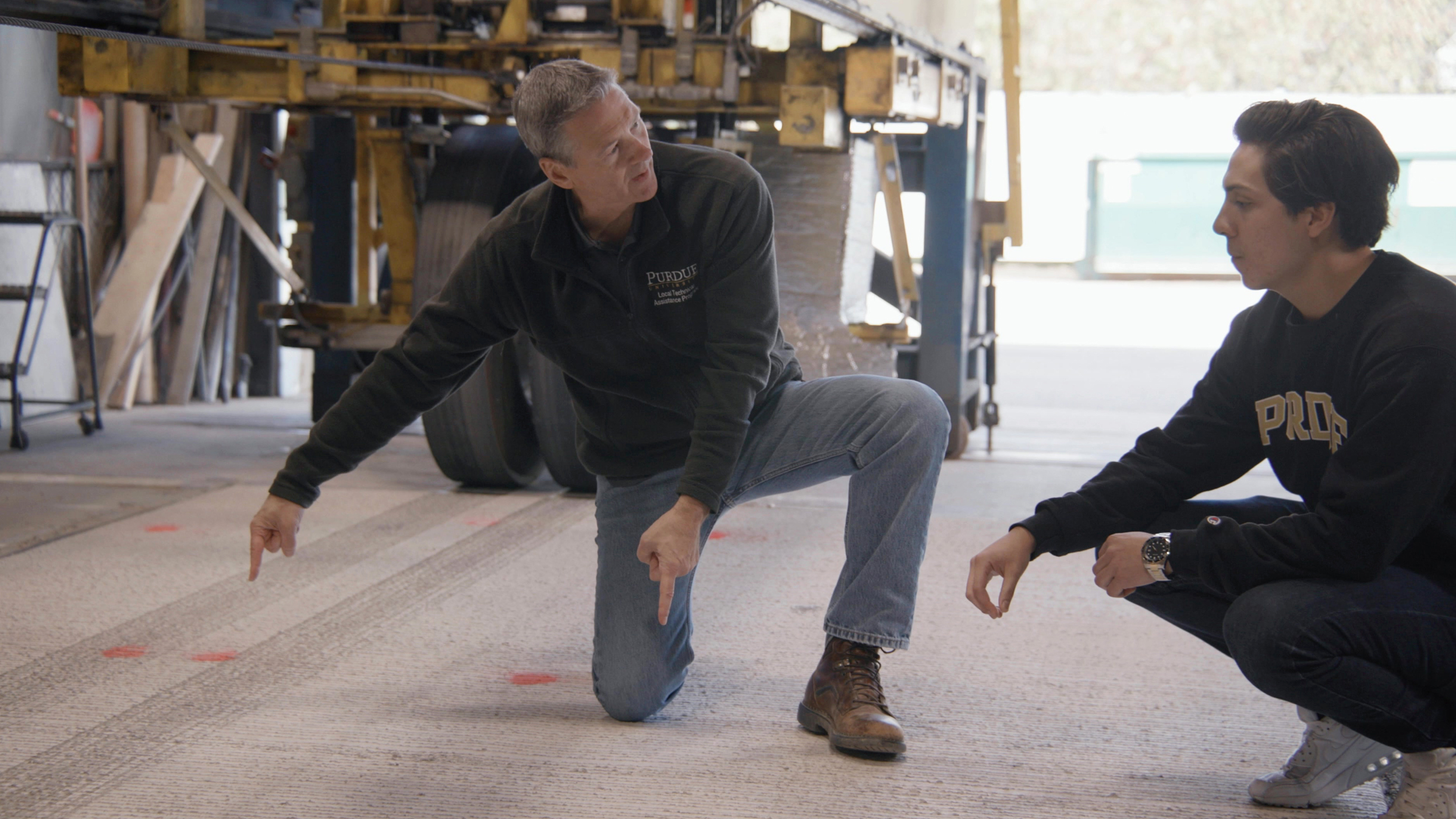
That’s because heavy-duty trucks would require significantly larger batteries due to their size, weight and the long distances they tend to travel, Gkritza said. However, she said, if they could receive power as they drive, it would allow those vehicles to carry smaller batteries, lowering overall costs and reducing the number of stops to recharge.
“Really the possibilities are endless,” INDOT’s Dollier said. “And we’re just hopeful that this is something that can really benefit a lot of people here in the state of Indiana and maybe even across the country going forward.”
INDOT says the pilot project should be complete by next summer, though private vehicles won’t be able to use it—at least not yet. Cars and trucks must be equipped with special receivers for the wireless charging to work, meaning current models are incompatible. The coils are installed underground and use magnetic fields to deliver the electricity wirelessly. Each coil only activates when a receiver is above it, Purdue researchers say, so the infrastructure won’t pose a threat to pedestrians, animals or other vehicles.
Kaylee Dann, executive director of Greater Indiana Clean Cities, a clean energy advocacy nonprofit that isn’t involved with the project, agrees that the new technology could spur greater EV adoption in Indiana and nationwide. In fact, she said, the project is coming at a time when more and more Hoosiers are choosing to go electric.
While Indiana’s overall EV adoption rates still pale in comparison to California and other leaders in the EV market, the state saw an astounding 1,200 percent increase in registered electric vehicles between 2016 and 2022, according to a state report published last year. Some 24,000 electric vehicles were registered in Indiana last year alone, according to the state’s Office of Energy Development.
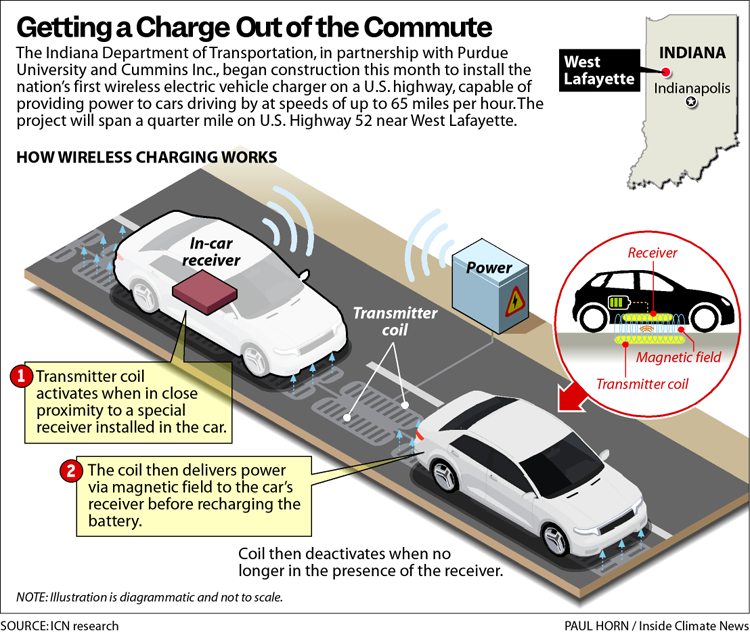

Dann believes that leaning into EVs has been a smart financial move by the state as the nation pivots to cleaner transportation options. Two recent federal policies—the 2022 Inflation Reduction Act and the Environmental Protection Agency’s new tailpipe pollution standards, finalized last month—are expected to dramatically increase domestic production of EVs nationwide in the coming years.
Indiana is already experiencing some of that economic gain. According to a state report published last September, Indiana has received about $8.2 billion in investments related to EV production since 2021. Those include a $3 billion investment by General Motors and Samsung to manufacture EV batteries in the city of New Carlisle and an $803 million investment by Toyota to expand its EV production in the city of Princeton.
“We’ve seen a lot of investment from manufacturers,” Dann said. “So we’re gonna see a big influx of EVs being produced in the state.”
But the biggest benefits to the state could be environmental.
In its annual State of the Air Report, the American Lung Association ranked the Indianapolis metro area the 10th worst city in the nation for year-round particulate matter pollution known as PM2.5. Regular exposure to PM2.5, which is produced any time something combusts, has been linked to increased health risks, including greater risk of asthma attacks, cardiovascular and lung diseases and even premature death.
Because EVs draw power from batteries, not from burning fuel, a higher adoption of them would lead to better air quality for any state. Gkritza said that reducing air pollution is one of the broader goals of Indiana’s pilot project. “Greenhouse gas emissions, air quality, these are really bad across those freight corridors, transit corridors—we have communities that are negatively impacted by freight movement,” she said.
More EVs also means fewer greenhouse gas emissions, Dann said, which helps to slow climate change. Transportation is America’s largest source of greenhouse gas emissions, according to the EPA, making up nearly a third of the country’s carbon footprint.
This story is funded by readers like you.
Our nonprofit newsroom provides award-winning climate coverage free of charge and advertising. We rely on donations from readers like you to keep going. Please donate now to support our work.
In Indiana alone, EVs contribute 60 percent less carbon pollution than their fossil fuel counterparts, Dann said, despite the fact that the state’s electricity—the fuel for EVs—is predominantly produced by coal-fired power plants. More than half of the state’s electricity in 2021 was generated by coal, according to the Indiana Department of Environmental Management.
Having strong EV charging infrastructure in Indiana could be a boon nationwide, given the state’s centralized location in the U.S.
Indiana has more interstate highways passing through it than any other state, Indiana Gov. Eric Holcomb touted in a 2021 report. It’s also home to the nation’s second largest FedEx hub and 41 freight railroads, he added, noting Indiana’s motto of being the “Crossroads of America.”
“Simply put,” Holcomb wrote, “the world moves through Indiana.”

